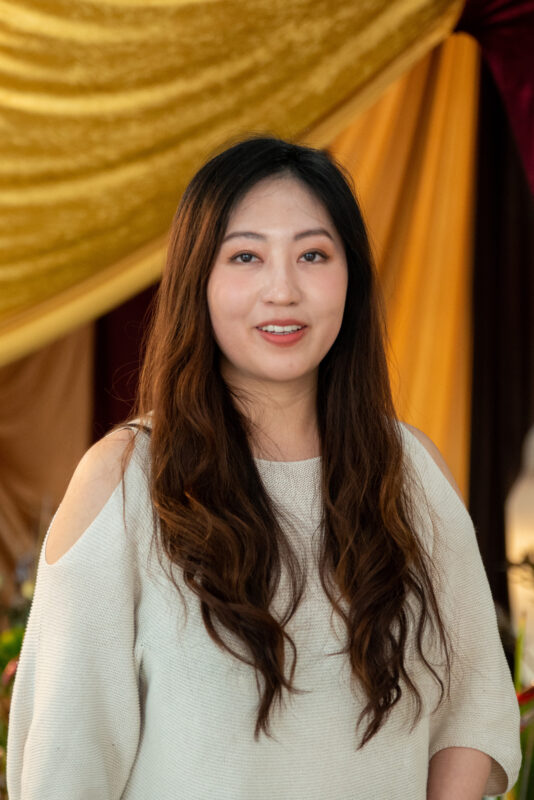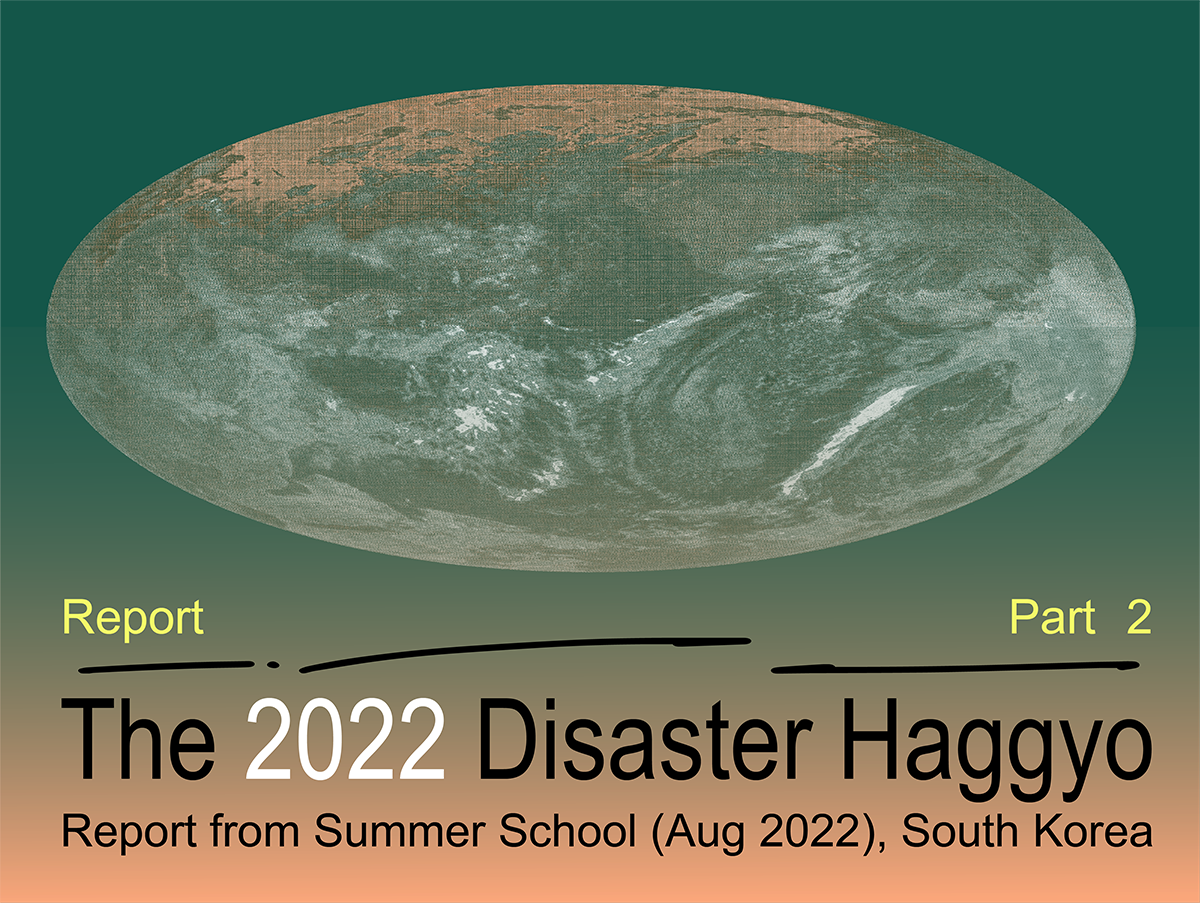
Report #2: Framer Framed in the 2022 Disaster Haggyo
Framer Framed partnered with Drifting Curriculum, Unmake Lab and KAIST Center for Anthropocene Studies for the 2022 Disaster Haggyo, a disaster studies school that facilitates site-specific research on disasters in the Korean Anthropocene.
On 11th December 2022, Disaster Haggyo Presentation will be hosted by Framer Framed, inviting participants to create dialogues around their shared experiences of mutual learning and the collaborative research process.
In this second part of the report, participant Kenneth Geurts reflects on his eight days of Disaster Haggyo in South Korea, following different keywords weaving through time and space.
Participating in 8 days of Disaster Haggyo
by Kenneth Geurts
December 2022
While Disaster Haggyo’s actual programme started on the 14th of August, it was unexpectedly preceded by an environmental event (in disaster studies they don’t use natural to describe disasters, more on that later). This environmental event occurred in Seoul in early August, after the worst rainfall in about eighty years. On the 8th of August, certain areas of Seoul flooded heavily; most noticeably the Gangnam district (a district of which the wealth and poshness have been worldwide knowledge ever since a certain chart-topping hit in 2012). But aside from the prevalence of eccentric and excessive wealth, the area is located in one of the lowest-lying areas of Seoul, thus very prone to flooding. As the water spread to the streets of Gangnam, images of floating Mercedes, BMWs and Audis spread around the internet. The area has a lot of high rises, and thus the upper classes are relatively safe from the floods down below – aside from their surficial material possessions, that is. Meanwhile, Seoul’s Banjihas – souterrain/half-basement apartments, which account for about five percent of all households in Seoul – were subjected to the floods, leaving many lower-income families in damaged homes or without a home at all. The scenes of the flooding were very reminiscent of Bong Joon-ho’s 2019 Academy Award-winning film Parasite. The striking similarities between the cultural phenomena Parasite and this material disaster was something that three of the speakers, all independently from one another, used to frame the discourse of Disaster on the first day of the Disaster Haggyo. NYU Professor Jacob Remes used this very example to illustrate how fiction shapes our experience and analysis; how we anticipate disasters and how this anticipation shapes our futures, in beneficial and non-beneficial ways.
In this report, I will be reflecting on the eight days of Disaster Haggyo #1. Due to the recurring themes in the Disaster Haggyo programme, I thought it was better to go about this thematically, rather than chronologically, weaving the different talks and sessions of different days together, finding connections and parallels. This Haggyo (meaning learning institution) had a particular focus on communal learning and community, the aim of this report is to translate this knowledge into something less ephemeral, to share the insights created during this Haggyo with a broader audience, as well as to create an archipelago out of the different islands of knowledge created during the Haggyo.
-
The Protean Essence of Disaster
- KAIST Professor Scott Knowles, Ksenia Chmutina (Loughborough University) and Kim Fortun (University of California Irvine) all noted that the societal understanding of disasters has to undergo a paradigm shift. Disasters, as noted by them, are not naturally occurring, rather they are a collectivity of intersecting processes and events: social, capital, environmental, cultural, political, economic, physical, and technological, transpiring over varying lengths of time. To understand disaster, we thus need to lengthen our temporal framework. All of these different forces playing out at the same eventually lead to disasters such as floods or war. Disasters are therefore the effects of our actions, or rather in-actions. All the different forces being of importance cause disaster studies to be such an interdisciplinary discourse.
As an Artistic Research student, I tend to focus on different ways of representing research. Thus, I thought it was great for KAIST and Drifting Curriculum to collaborate with Framer Framed to establish an artistic module in the programme by inviting different artists. Artistic Research is often considered as a discipline that is able to overcome the rigid boundaries of academia, as well as seamlessly incorporate elements from different disciplines. These sorts of characteristics are very important to disaster studies according to Fortun, as traditional academia forces research to be as narrow as possible – to single out and individualise problems and cases, thus losing connections in the process. An example of artistic research could be seen in the work of the Korean art collective UNMAKE Lab, whose work revolves around the ethics of AI (artificial intelligence). UNMAKE Lab aims to think critically of data and AI in a data-driven society, working as both a curatorial and artistic collective, engaging with this goal through different means. Their video work The Sisyphean Variables, is a surrealist 3d rendered artwork, based on the ecological extraction and draught of a certain construction site in Korea, criticising the subservient role of ecological landscapes in contemporary society through a digitally rendered retelling of a classic myth. In their curatorial work, they have worked on The Forking Room, a yearly exhibition on data and AI. Works of past exhibitions included Sjoerd ten Borg’s Streetswipe, a work on the social disaster of gentrification.
Through a tinder-like swiping app, ten Borg’s Streetswipe aims to create a dataset of the gentrified and non-gentrified spaces of Amsterdam. Another work included in The Forking Room was Alexia Achilleos’ Colonial Landscapes, in which the artist used orientalist, colonial photographs of Cyprus, taken by British photographer John Thomson in 1878, to train an AI to produce new photographs based on the dataset it received, resulting in eerily familiar, yet somewhat distinct images of the island of Cyprus. For the Disaster Haggyo programme, UNMAKE Lab organised a ‘Dataset for Retracing’ workshop. where they instructed the participants of the Haggyo to each take twenty images, during their stay on Jeju island, that represented disaster for them. This would then be turned into a collective subversive ‘disaster dataset.’ As the artistic practice UNMAKE Lab revolves around the critique of such datasets, the dataset had the aim to be a meta-critique of itself. Many questions arose from the participants from this assignment; how do we represent disaster? As they did not want to take pictures of actual sites of disaster, but AI would not understand the metaphorical meaning of the ocean as a representation of disaster. Through the assignment itself, Unmake Lab was already able to offer a critical reflection on such datasets and AI.
Taiwanese artist Chihchung Chang – another artist invited by Framer Framed – deals with similar colonial themes in his works, such as the installation Port of Fata Morgana, of which a fragment was exhibited as part of the Drifting Curriculum exhibition shown in the KAIST. Port of Fata Morgana focuses on the Hongmaogang village, a village whose name translates to Ginger Hair Village, named after the former Dutch colonial rulers of the village. Weaving personal history, colonial history, fact and fiction together, Chihchung explores the different facets of the village changing over time. Such as the declining shipbuilding economy of the village due to globalisation. South Korea shares a similar history with Taiwan in this regard, as Dutch colonial expansion also reached the shores of Jeju Island. Chihchung organised a workshop around this history for the Disaster Haggyo. The Haggyo visited a replica of the De Sperwer, a ship that became shipwrecked near Jeju in 1653. About 35 members of the ship’s crew made it to Jeju Island, where they were captured, and forced to live and work in Korea. A few of these crew members eventually escaped to Japan after living in Korea for 13 years, among them Hendrik Hamel, who would go and describe his experiences in Korea in a series of letters. This case served as a mode to reflect on several acts of colonialism and shared histories.
South Korean artist Yunjoo Kwak’s video work Only our Ports are Loyal to Us takes of the form of an essay that explores the colonial connection between Surabaya and Amsterdam through archival material. Through a constellation of floor plans of warehouses, maps and paintings of Dutch yachts sailing the high seas, she reflects on this (forced) relationship between the two. Her work was exhibited at KAIST as part of the Disaster Haggyo programme, but she also hosted a filmmaking workshop on Jeju at the Dong-jjok Song-dang Nature Park, a yet-to-open thematic park that revolved around stones. Her workshop revolved around the histories that stones carry with them. At the same park, master stonemason Hwanjin Cho, organised a workshop in which the participants of the Haggyo were instructed to build a Bangsatap – a traditional tower made by stacking stones, an important aspect in the construction of the Bangsatap is the aspect of a community. Due to the weight of the stones, working together is essential to be able to construct a Bangsatap.
-
Capital & Community
- So far, I’ve mostly tried to establish the multi-layered polyvalent nature of disasters by highlighting different aspects of the programme, while simultaneously focussing on the threads that connect these aspects to emphasize the multi-faceted nature of disaster discourse. The Haggyo mostly revolved around two case studies of disasters from (recent) Korean history: the 4.16 Sewol Ferry disaster and the 4.3 Jeju uprising. Before going into depth on those, however, I first have to touch upon two crucial concepts – crucial regarding these events, as well as crucial for disaster discourse in general. These concepts are community and capital.
Remes defined disasters as ‘suffering out of place,’ while Chmutina defined them as exposing everyday harm. Going back to the Parasite-like floods in Seoul in August this year, these people were already in a bad place – it is obviously predominantly lower working-class people that live in the Banjihas. Their suffering was already occurring, but their suffering is part of the hegemonic capital system as Remes pointed out. The fact that these people are living in basement apartments is not a disaster in and of itself within capitalism, as this mode of living is integrated within the capitalist system. I would even dare to say that it is essential to the capitalist system that there are people that live like that, as the system thrives on inequality. As Chmutina pointed out, the greater the inequality, the greater the disaster. Through this capitalist hegemonic system, it is inherent that some communities are more disaster-prone than others.
Regarding community, journalist Colleen Hagerty outlined the concept of parachute journalism in her talk. In which big news stations flock to a disaster scene to report on a breaking news item. These items often lack the context of the area and scene, and as soon as the item isn’t hot anymore, these big news companies stop reporting on the item, despite the fact that the follow-up news stories are often very important to those affected by the initial disaster. Research has pointed out that after disasters, people tend to flock to local news stations for information, as they crave these hyper-local communities. However, due to neoliberal policies, funding for local news stations has been cut pretty much worldwide, and thus an important pillar for disaster-struck communities is disappearing. This gradual disappearance of local news stations thus results in a sort of perverse disaster fetishism, as the big news stations are only there for their own benefit; to report on a popular news item and subsequently gain more popularity themselves.
As Knowles pointed out in his plenary lecture in the Disaster Haggyo programme, it is important that researchers work together with communities. Those affected by disasters should not be the subject of research, the events surrounding these people should be the subject of research. These communities affected by disasters have to be involved in the research, as they are the ones that record and archive material important for research. Director of the Center for Anthropocene Studies Buhm Soon Park draws on Spivak and Foucault to talk about the representation of these communities. And that one should not speak for these communities, but that one should rather let them speak, or create the opportunity for them to speak. Associate professor at KAIST, Seung-Sup Kim, expanded on this notion by stating that hegemonic voices are often deemed rational, while subaltern – those that tend to be affected by disasters – voices are deemed overly emotional, whining and incompetent, and thus remain unheard.
Architect Hyun Sik Min, in charge of the 4.16 Sewol life and peace park, repeated the mantra of the 2000 Venice Biennale in his talk: ‘less aesthetics, more ethics.’ For him, community should be the focus of a memorial site; ideologies of architecture should take a step into the background, and the primary focus of architecture should be to create a place where people can interact with one another: architecture and art should be community focussed. This mantra of community focussed art was also echoed by Asia Komarova of the Travelling Farm Museum of Forgotten Skills in her conversation with Colin Sterling on new methods of museology. The Travelling Farm Museum of Forgotten Skills perceives art as a way to create communities and share knowledge and experiences; as a way of commoning. These values were once again echoed by the students of the Disaster Haggyo team during our closing session at the 4.16 center in Jeju. In which they reflected on what they thought were the key concepts of Disaster Haggyo; Ethics of Care, and Haraway’s Thinking.
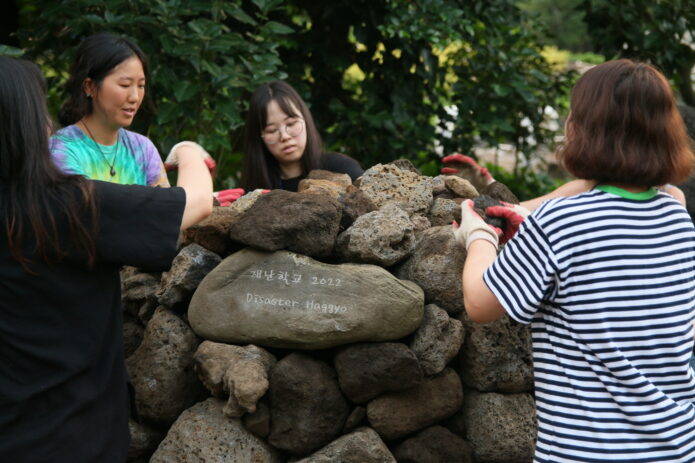
4.16 & 4.3
There is a lot to cover on the topic of the 4.16 Sewol Ferry Disaster. A disaster in which a ferry heading to Jeju from Incheon sank on the 16th of April 2014. Resulting in 304 people losing their lives, 250 of which were students at the Danwon High School in Ansan. When the ferry started sinking, the crew of the MV Sewol told everyone to stay put in their cabin and put on their life jackets. Rescue operations started very late: about 40 minutes after the ship started sinking. By the time the first rescue vessels arrived, the crew and the captain jumped overboard with about 150 other disobedient passengers, leaving the other passengers behind in their cabins. Even though I would love to cover all of the aspects and stories surrounding this disaster, this would result in a very extensive report. Thus, some narratives have to be necessarily left out. This unfortunately means excluding heartfelt anecdotes and memories from the parents, technical information on the disaster, histories leading up to the 4.16 Sewol disaster, and several impressive memorial sites and monuments. A couple of parents from bereaved families were part of the programme, which definitely gave depth to Haggyo. Often, they could relate academic concepts to their own experiences while teaching all of us more about the Sewol Ferry disaster. One of the most touching moments of the Disaster Haggyo was when we visited the High School that the students went to in Ansan. Or at least, the rebuilt high school, as the spontaneous memorial site that erupted after the disaster was removed by government officials after two years, as they needed to use the space as an actual high school again. Multiple forces were at work here, forces of capital – as the government did not want to spend the budget on building a new school, but also hegemony-subaltern power dynamics, as the government was implicated in this disaster. After trying to fight this decision, the bereaved families eventually lost the case, and thus the 10 Memorial classrooms that served as memorial sites were evicted. In response to this, the parents rebuild classrooms exactly as they were: brick by brick, table by table. This testament to remembrance shows the perseverance of these parents to remember.
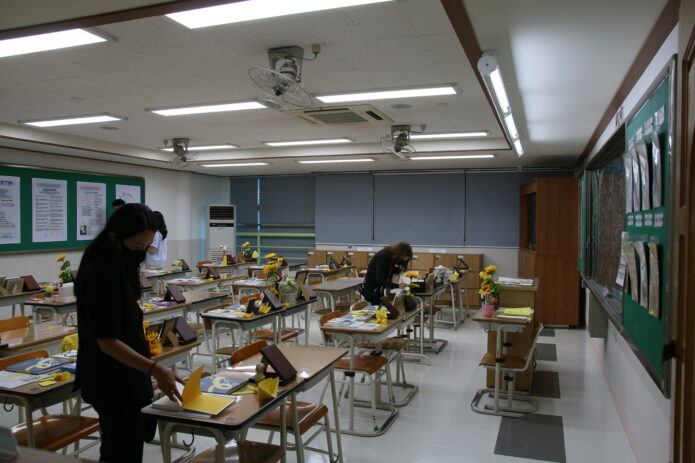
An interesting statement that architect Hyun Sik Min made during his talk, is that the same cause was at the root of both 9/11 and Sewol: capital. The reason that the Sewol ferry sank is capital, as the ferry was carrying three times its weight in cargo to generate more profit. Some of the cargo the ferry was carrying were steel beams for a military naval base in Jeju. Different societal forces at work eventually caused the force of capital to result in a disaster. Just like the floods in Gangnam, the same up-down dynamic is in place, as the first class of the ferry was located on the top of the boat, while the second class was located down below. As mentioned earlier, disasters tend to strike and impact certain communities more, and in this case, again, the victims of this disaster came from working-class families. The reason why it took the families many years to impact society after the disaster happened, the reason it took so long to generate societal change, is because of their working-class background. A slow process was eventually made due to the dedication of these parents, but their social class made it hard to influence anything.
One of the most difficult themes that the parents kept bringing up, was the topic of moving on, when do we forget? What does it mean to ‘never forget?’ Several answers came up, but a running thread was to never forget, to keep remembering. As they mentioned that the disaster should be remembered; because of its importance, as well as to make sure it doesn’t happen again. In Cultural Heritage studies, a discourse closely related to disaster studies, it is often implied that our understanding of the present is influenced by the past (and vice versa). Therefore, if we remember the event, the policies in place to make sure it never happens again should remain in place.
On this question of moving on, some of the parents emphasised that moving on does not mean forgetting. Even though the two might seem closely related. They were hesitant at first to move on, as they did not want their memory of their child to grow weaker. However, eventually, they found out that moving on and remembering can coexist; more so, moving on can even be beneficial for the remembering process. They mentioned that trauma can be a source of community – that this disaster gave them a new identity and community as ‘Sewol Ferry activists’ as they fought and protested for to hold the people in power responsible as well as new regulations. This communal feeling of support and solidarity gave them the power to move on and heal. These processes of growth and regrowth helped them heal from their trauma. As wounded healers, they were able to reciprocally help one another heal – without forgetting – by working together as a community. Another source of regrowth for them is the soon-to-be realised 4.16 Life and Safety Park in Ansan, which they were able to materialise through perseverance and dedication. As they said: ‘ordinary parents are now changing the landscape of the town of Ansan.’ It is thus communal power that eventually created a space for these subaltern voices.
The second case study of the Haggyo was the 4.3 Jeju uprising. An uprising with many implicated actors, and intertwined histories. These histories together are often referred to as the 4.3 Jeju uprising, which refers to the date that the disaster began, the event, however, unfolded over several years. This history has a prologue to the events occurring on April 3, 1948, which are the protests of the election in South Korea in 1948, as the residents of Jeju feared that this election would divide Korea into two parts. Protesting these elections, tensions on the island rose, eventually leading to an attack by a guerrilla faction of the Workers Party of South Korea on April 3, 1948, in which they attacked police stations and establishments of the Northwest Youth League, a paramilitary right-wing extremist group. An uprising born out of despair, to protect the autonomy and ideology of the island. Tensions on the island remained high, as the uprisings and protests were cracked down upon by the Korean government, backed by the United States. When the Korean War broke out more than two years later, the South Korean military ordered to round up of every suspected leftist in the country, of which Jeju had a high concentration. This led to a systematic killing of civilians by the government, resulting in more than 30.000 people (more than 10% of the population of Jeju) losing their lives.
We visited the 4.3 peace park for the Haggyo programme, a park of incredible scale with different memorial sites, ranging from graves to abstract sculptures, commemorating the individuals and families that fell victim to this act of state violence. Before the Haggyo, participants were expected to read Sun-i Samch’on (1978) by Korean writer Ki-young Hyun, a book exploring the family traumas of the Jeju uprising, and how deep the contemporary implications and effects go. Sun-i Samch’on delves into the buried past of the island, something that shouldn’t be understood only metaphorically, but also materially. Underneath the airport of Jeju, which is part of the world’s most frequently flown airline route (Gimpo – Jeju) still lay the remains of some victims of the 4.3 disaster. This, and many, many other histories and artifacts were collected in the 4.3 memory center, located near the park.
In this memory center, and during our guided tour, it was also mentioned that 4.3 should be understood as constitutive of contemporary South Korea. As the 4.3 uprising was the first act of resistance against the totalitarian government which ruled South Korea until the late 1980s. An important event in this history is the switch of power from the Japanese occupiers to the US government. The residents of Jeju were very active in the Korean Independence Movement, a movement fighting against the Japanese Imperial forces during the Second World War. After the liberation from the Japanese, the US took control of the island and reinstalled the very same Japanese officials that terrorised, tortured and killed the people of Jeju during the Japanese occupation. While these days South Korea is a democratic nation, these histories are still relevant due to the very close (military) ties between the US and South Korea. The 4.3 event represents a different side of disaster, while 4.16 was indirect state violence due to capital forces, corruption and incompetence, 4.3 was a very direct act of violence by the state against its own people, just because they were alleged communists. And sadly enough, these sorts of actions were in the end effective at establishing global capitalist hegemony.
One of the monuments in the 4.3 peace park is a rice pot. In the guided tour that we got, our guide explained that due to the importance of food, and communal eating in Korean culture, rice should be seen as a symbol of community. There are also several sayings that revolve around rice in Korean culture; if you ask someone ‘are you good?’ this could be translated as ‘are you eating rice?’ as well as the saying ‘you don’t have anything, but you are eating rice.’ Here again, the importance of community is once again emphasised. Community is especially relevant in the case of 4.3, as the uprising was such a rapture through the community of the island. Every single district had victims, and thus the entire island was affected.
While our guide was explaining the importance of rice in Korean culture, the sun hit its highest point as the clock struck noon. On an already hot and humid day, the conditions got uncomfortably hot. Continuing our tour, we were actively looking for a place in the shadows to stand in, to hear about the monument located in the core of the park. We were told that the water, which is part of the monument, doesn’t run anymore, and is only turned on for special occasions. It was here that the disaster of climate change was slowly deploying itself, influencing the memorial site of another event, showing that remembering and disaster can occur at the same time, as disasters are events that slowly develop and transpire over time.
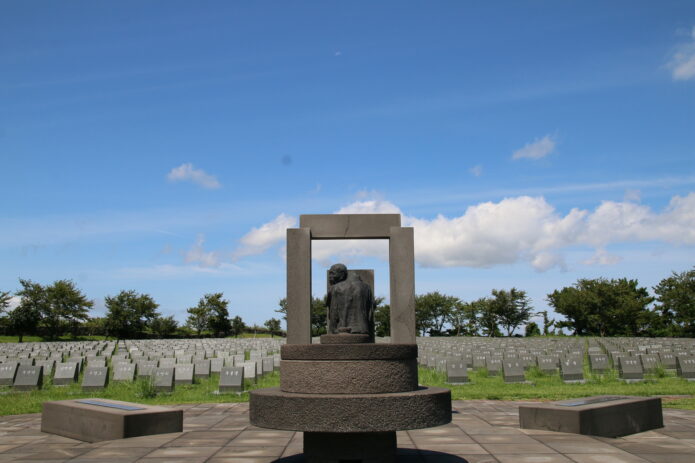
Read more about the program & the lecturers here.
Read the first report on the 2022 Disaster Haggyo here.
Community & Learning / Ecology / Art and Activism / Politics and technology / Workshop /
Agenda
Transoceanic Memories: Disaster Haggyo presentation
An afternoon of transdisciplinary dialogues on disasters in the Anthropocene supported by Arts Council Korea
Network
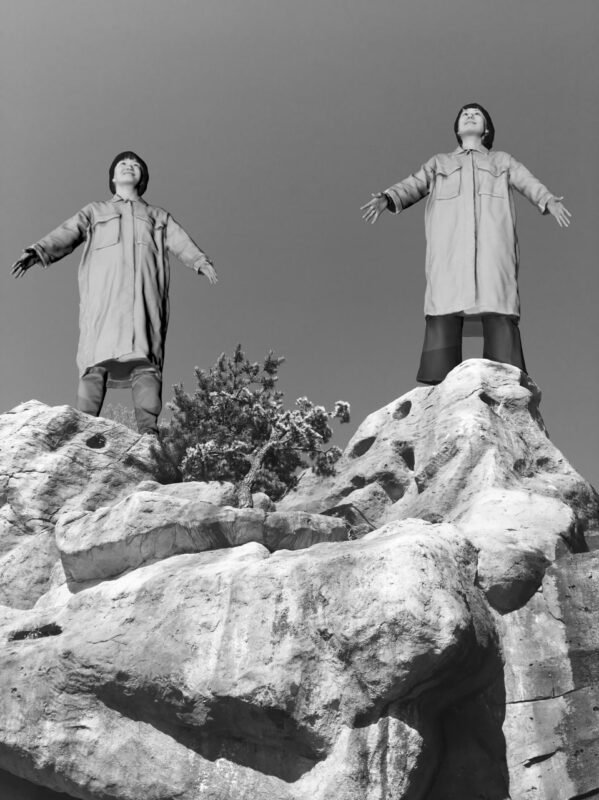
Unmake Lab
Artist

Kenneth Geurts
Researcher
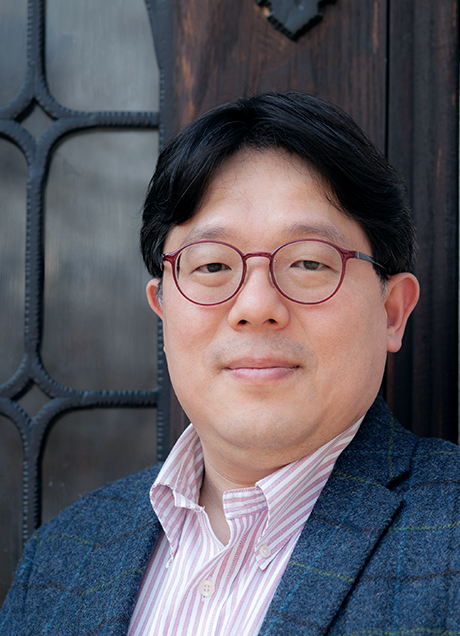
Chihyung Jeon
Researcher
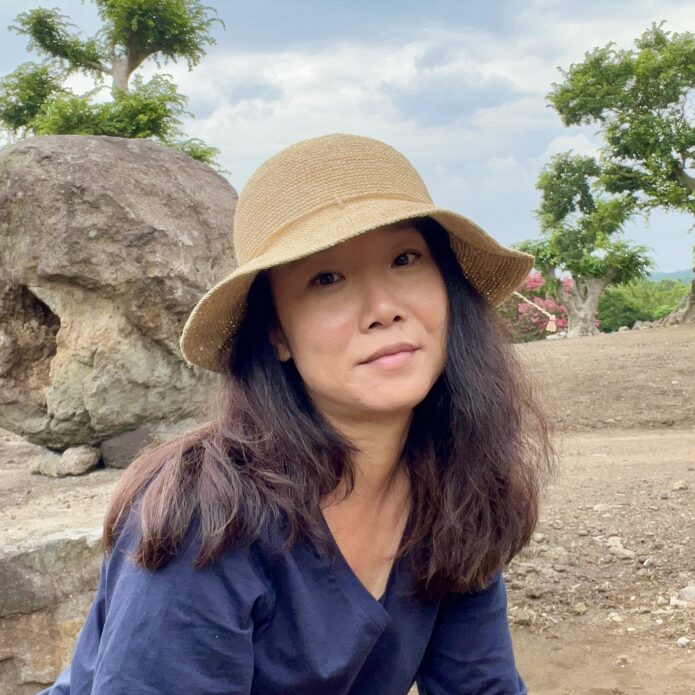
Yunjoo Kwak
Artist
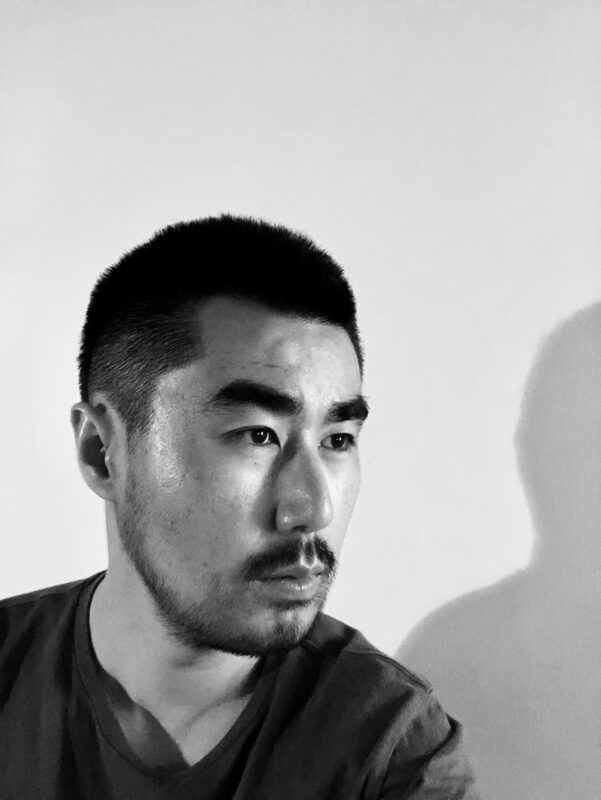
Chih-Chung Chang
Artist
